It’s that time of year when attention in the United States turns to the wild turkey: the de facto symbol of Thanksgiving. In addition to the meal, turkey images adorn everything from door decorations to advertisements. And chances are, if you live in the U.S., there’s a wild turkey roaming near you.
The wild turkey has become a familiar bird, now scratching even in suburbia. But its familiarity should make it no less fascinating.
Here are some essential turkey facts that you can use to dazzle your family and friends at your Thanksgiving feast. And I’ve included some features on another turkey species – and a turkey look-alike – that are equally cool. We’ve written a lot about turkeys on Cool Green Science over the years, so each section also contains a link where you can go deep into turkey trivia.
So sit back and get ready to gobble (sorry) up all things turkey.
-
What Turkeys Eat (Spoiler: It’s Just About Anything)
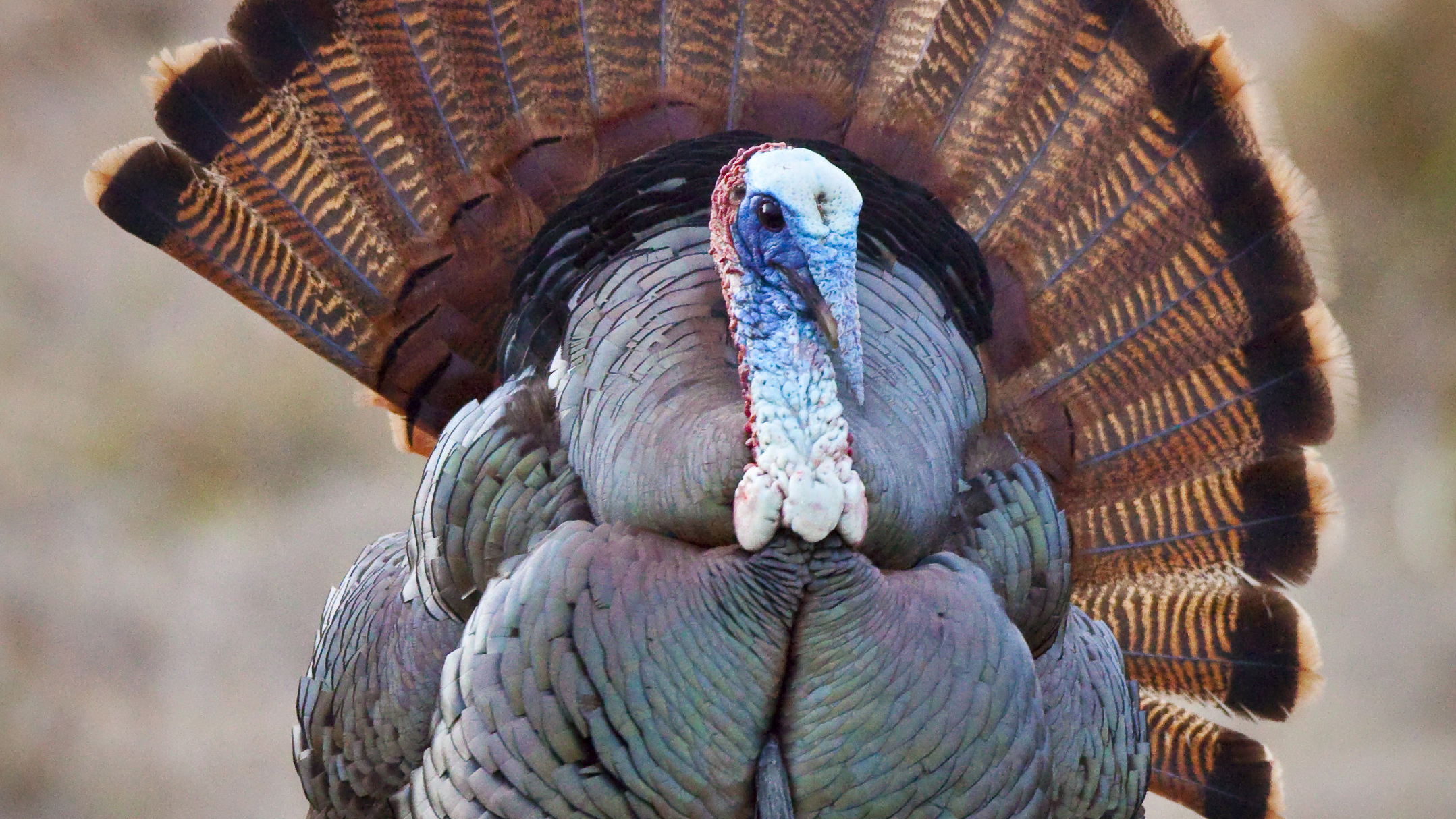
Osceola Turkey at Disney Wilderness Preserve in Florida. Photo © David Moynahan As you sit down to your turkey dinner, perhaps you have pondered what a turkey eats. And like that certain uncle at the dinner table, wild turkeys will eat just about anything that fits into their mouths.
As ornithologist Joe Smith writes:
Acorns and azalea galls, bluegills and blueberries, crabgrass and caterpillars … they all go right in.
Prickly pear and panic grass, toothwort and tadpoles, grasshoppers and grapes, pecans and paw paws, sedges and snakes … and the list goes on.
Depending on the plants species and time of year, turkeys will eat roots, bulbs, stems, buds, leaves, flowers, fruits and seeds.
In search of protein, they move about the woods like a pack of velociraptors, thrashing up the leaf litter and eating anything that moves.
Their quarry includes all manner of insects as well as salamanders, lizards and frogs.
Yes, you read that right, frogs.
Read Joe Smith’s blog on the turkey’s weird and adaptable diet. (And, no, this diet is not suitable for you to shed holiday pounds).
-
The Wild Turkey’s Recovery is One of the Greatest Wildlife Comebacks of All Time
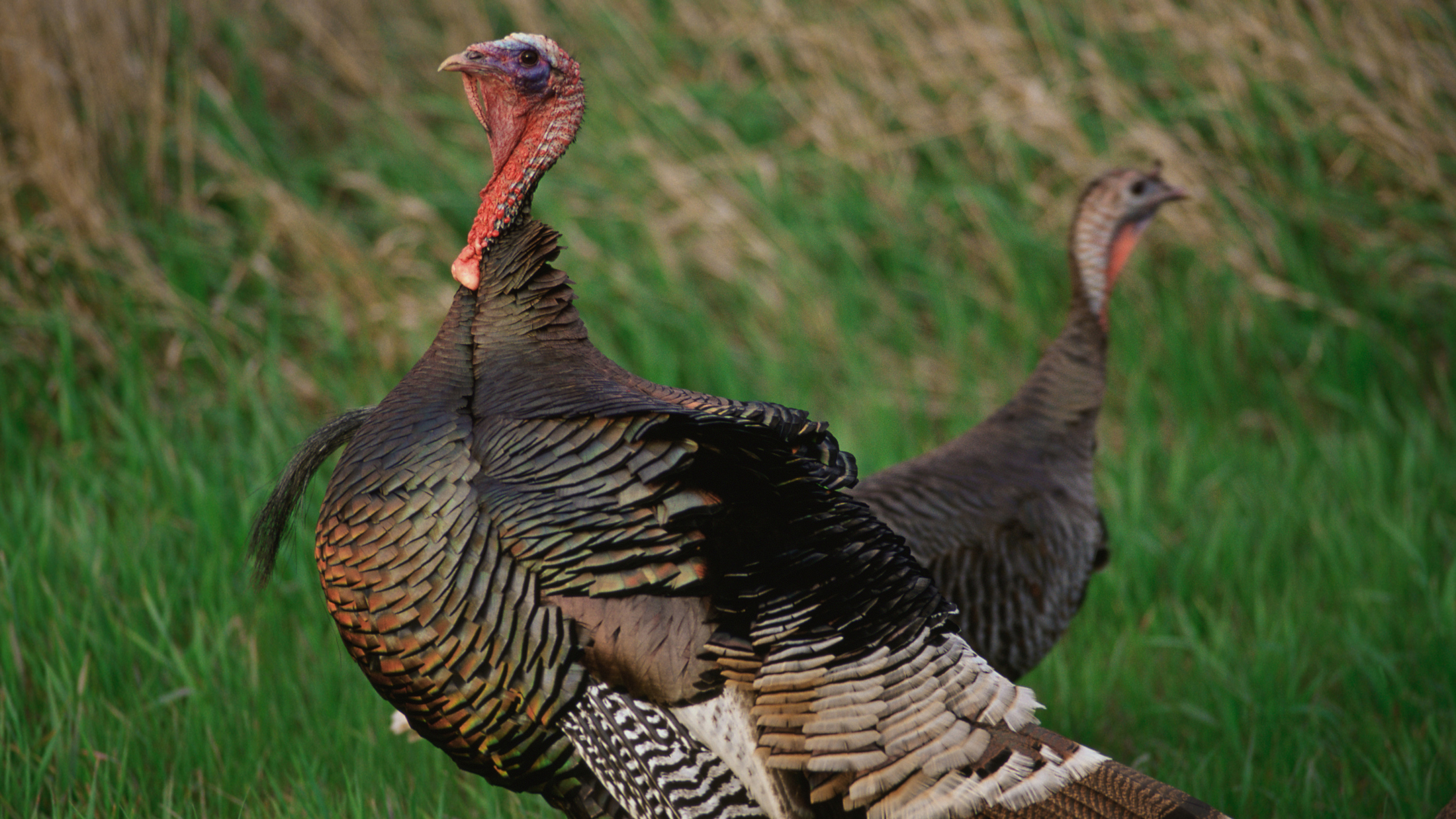
Photo: © Mark Godfrey Any conservationist knows about the plight of the African elephant and the orangutan. Consider this: At the turn of the 20th century, the population of American wild turkeys was lower than the population of elephants or orangutans today.
Turkeys had suffered from a history of unregulated hunting and loss of forest habitat. As was the case with many larger North American wildlife species of the time, many considered them doomed. Their population was estimated to be only around 30,000 birds.
What happened next is one of the great chapters of conservation history: a combination of regulation and reintroduction, coupled with the reforestation of the eastern part of the country. The turkey’s recovery featured mistakes, to be sure, like using birds raised in hatcheries for reintroductions. (They lacked the ability to survive in wild conditions). But trapping wild birds from abundant populations and releasing them in suitable habitat proved spectacularly successful.
Some say too successful. Today turkeys are established well beyond their native range, and they can be a nuisance in agricultural and suburban areas. Still, I suspect most conservationists would take a future with too many orangutans rather than not enough.
Let’s celebrate the turkey’s recovery for the success that it is. Read the full story on the turkey’s recovery.
-
The Negative Side of Turkey Recovery: Genetic Mix-Up
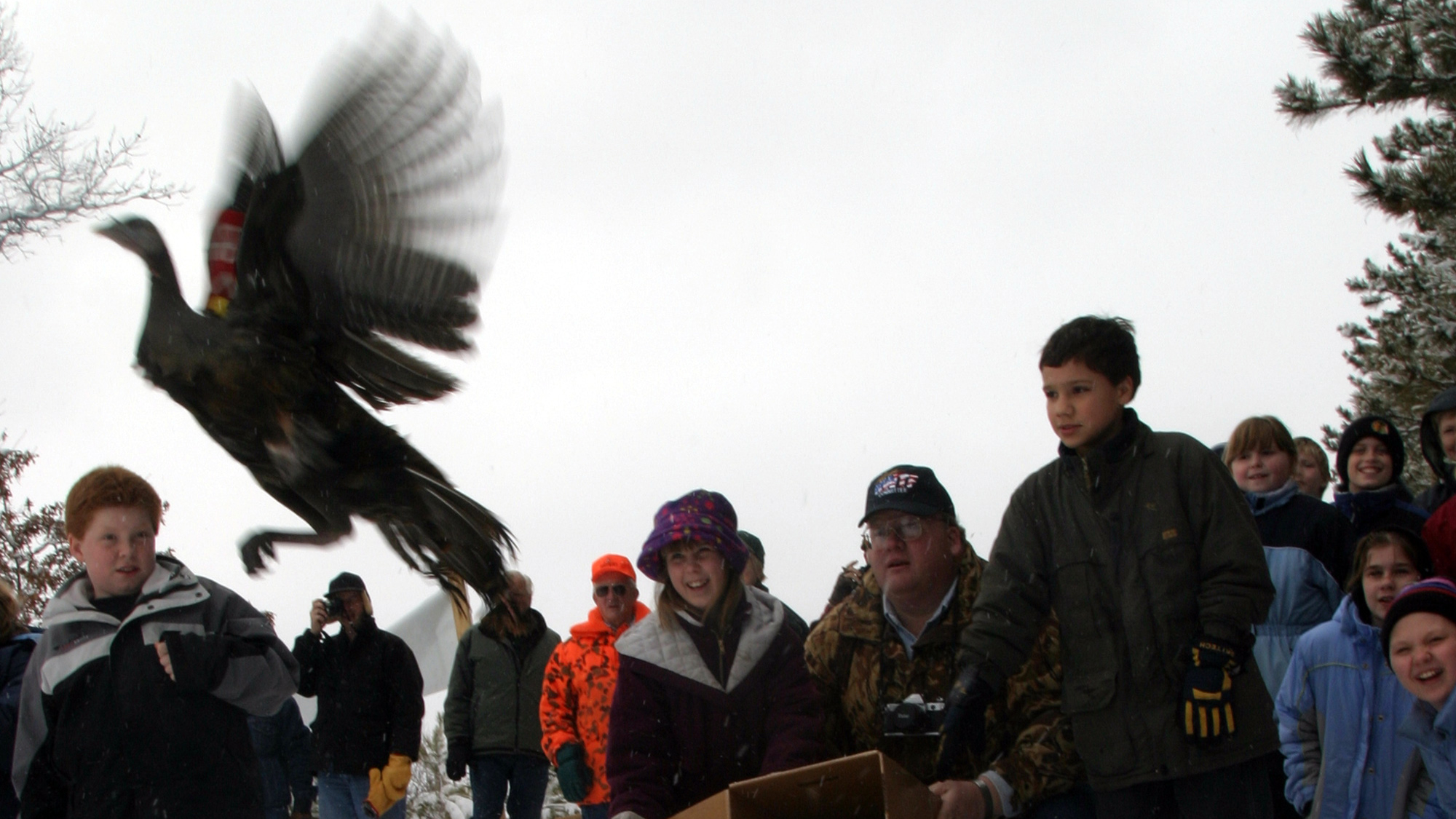
A wild turkey is released in Wisconsin. Photo © Paul M. Walsh/Flickr under a Creative Commons license. There are five wild turkey subspecies scattered across North America, each with some fairly distinct differences in plumage and shape. During turkey recovery, wildlife managers trapped and moved turkeys widely. Some 200,000 turkeys were moved to different locales.
Unfortunately, in the rush to establish new flocks, many managers didn’t pay attention to subspecies. What resulted is a great genetic shuffling of turkey subspecies, with some populations remaining pure and others consisting now of hybrids.
There are Western states, outside the turkey’s native habitat, that have as many as three subspecies, each now living in different habitat types.
Fortunately, there are still five subspecies roaming the continent. Conservationists can learn a lesson in wildlife restoration here, and also work to protect the remaining pure populations.
-
What’s It Like to Be a Turkey?
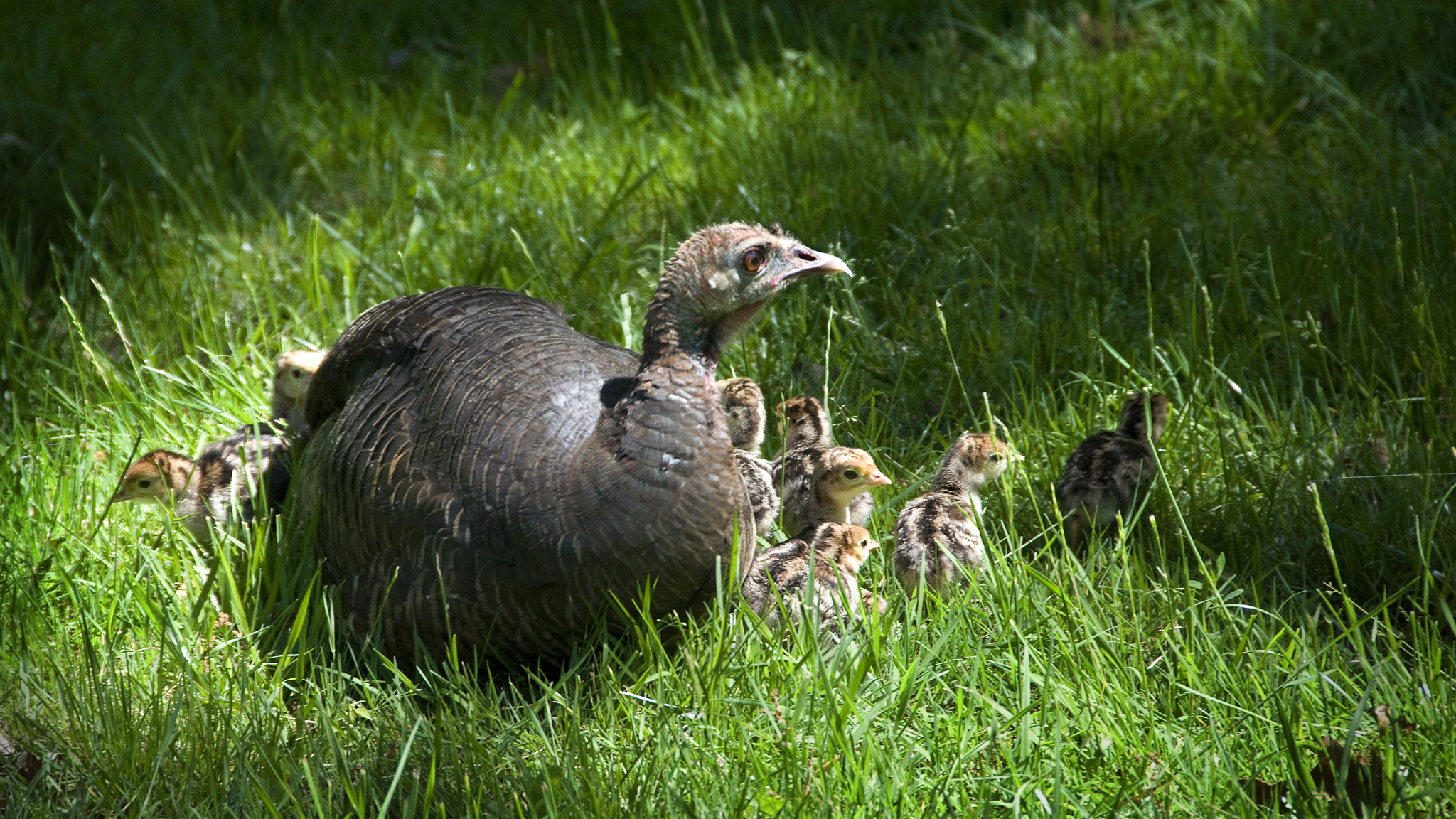
A wild turkey with her young poults. Photo © Brookhaven National Laboratory through a Creative Commons license As a large, popular and abundant game species, turkeys are one of the most well-studied birds on earth. There’s no shortage of information on the web detailing their natural history, from the mating season to nesting to habitat needs and more.
But if you want to go deeper and find out what it’s like to actually be a turkey, then the choices become more limited: Joe Hutto’s magnificent book and movie.
Hutto is a wildlife biologist who raised a brood of turkeys … as a turkey. He lived with them in the woods from hatching to adulthood. The story is told in the book, Illumination in the Flatwoods, to my mind one of the greatest nature books ever written.
And it’s also the subject of a PBS documentary, My Life as a Turkey. The natural history is fascinating. But even more so is the portrait of these birds that emerge: They lead complex lives, and have individual personalities. Hutto approaches this as science, so this is not anthropomorphism.
Let’s face it, the football game is just going to leave you yelling at the television. Do yourself a favor and make this your Thanksgiving holiday tradition.
Read more about My Life as a Turkey (including how to watch it online).
-
There’s Another Turkey, and It’s Freakishly Cool
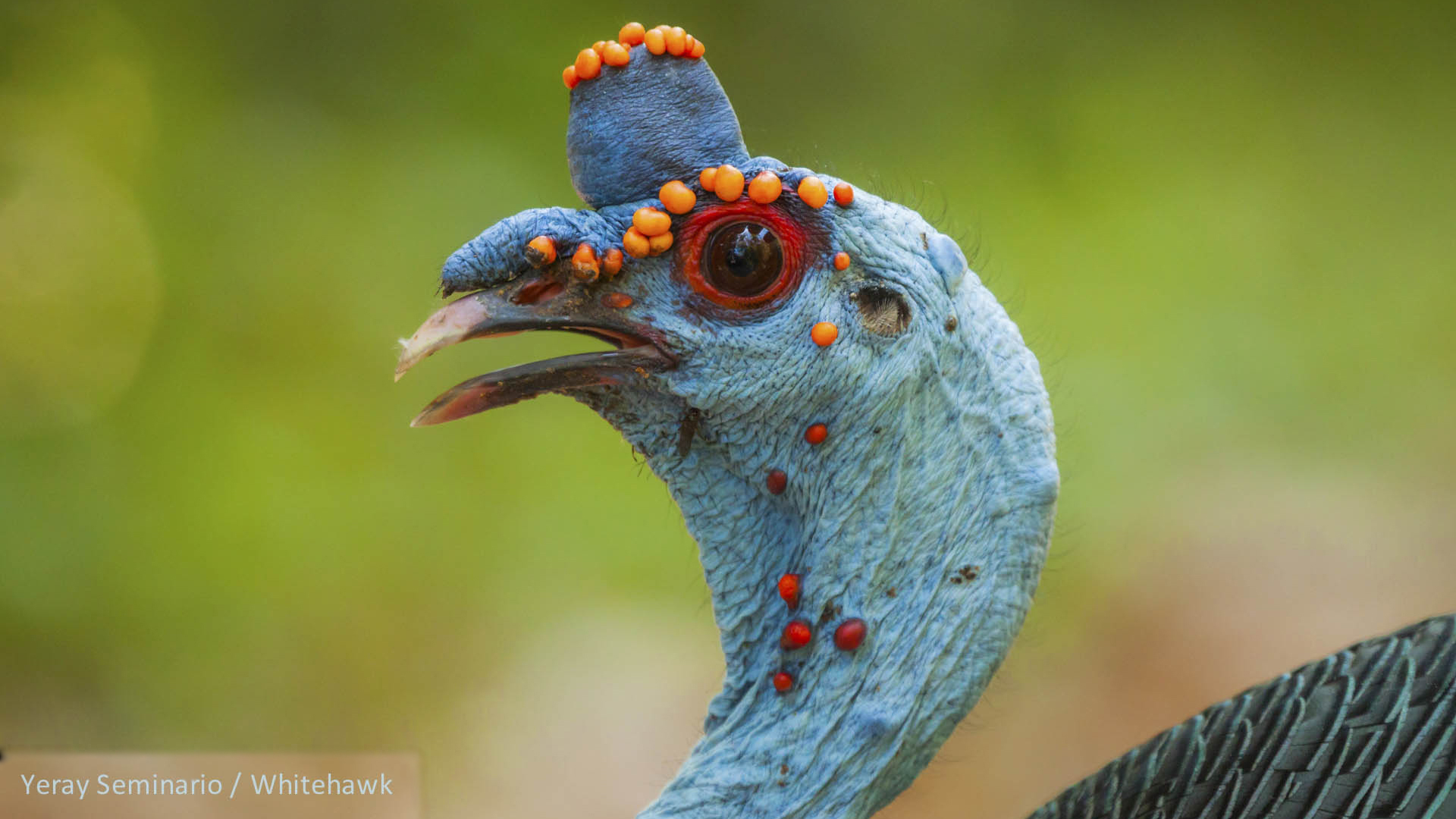
An ocellated turkey male. Photo © Yeray Seminario, whitehawkbirding.com, used with permission It’s a turkey as conceived by Dr. Seuss.
Found only on the Yucatan Peninsula of Mexico, Guatemala and Belize, the ocellated turkey (Meleagris ocellata) certainly bears a resemblance to the American wild turkey.
But it’s a different species. It is smaller and lacks the “beard” typical of the more familiar wild turkey. Its mating call is higher pitched than the usual “gobble.” The most striking difference, though, is the color.
The vibrant, almost unreal color: iridescent feathers, large spots on the tail, a bright red ring around the eye and a blue head covered with red and yellow nodules (nodules that swell and become brighter in males in the breeding season).
Unlike the American wild turkey, the ocellated turkey is not well studied and appears to be in decline. Can we replicate a conservation success for this species?
-
And Then There’s the Australian Brushturkey, Which Isn’t a Turkey At All
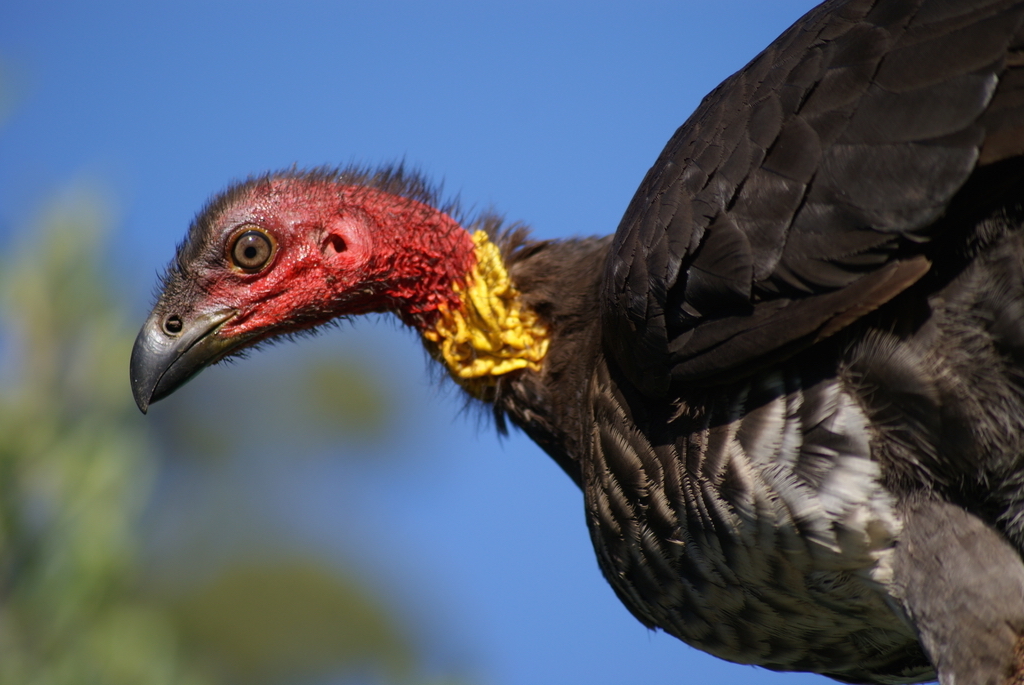
Australian Brushturkey. Photo © Brisbane City Council / Flickr The unnamed person who gave the Australian brushturkey its common name can be forgiven. It sure looks like a turkey.
Brushturkeys are actually megapodes, a family of birds only in Australasia, Polynesia, New Guinea, and Indonesian Islands east of the Wallace Line. The family name literally means “big foot,” and one glance at the dinosaur-like feet of the brushturkey is all you need to rest assured that this name is quite accurate.
Utterly unmistakable even to the most novice of wildlife watchers, brushturkeys have glossy, brown-black plumage and a massive, broad tail that, unlike Northern American turkeys, is oriented vertically.
The species’ most distinctive feature is undoubtedly its brilliant red face and colorful wattle — the dangling, fleshy growth hanging from the bird’s throat. Wattle color varies with both sex and location: Males in the southern parts of the bird’s range have a bright yellow wattle, while males on the Cape York Peninsula have light blue wattles. Females in both areas have dull yellow wattles.
Read more about the Australian brushturkey.
And, if the Australian brushturkey has whetted your appetite for other turkey look-alikes, here’s a post on ten of the world’s fantastically bald, be-wattled and gloriously ugly birds.
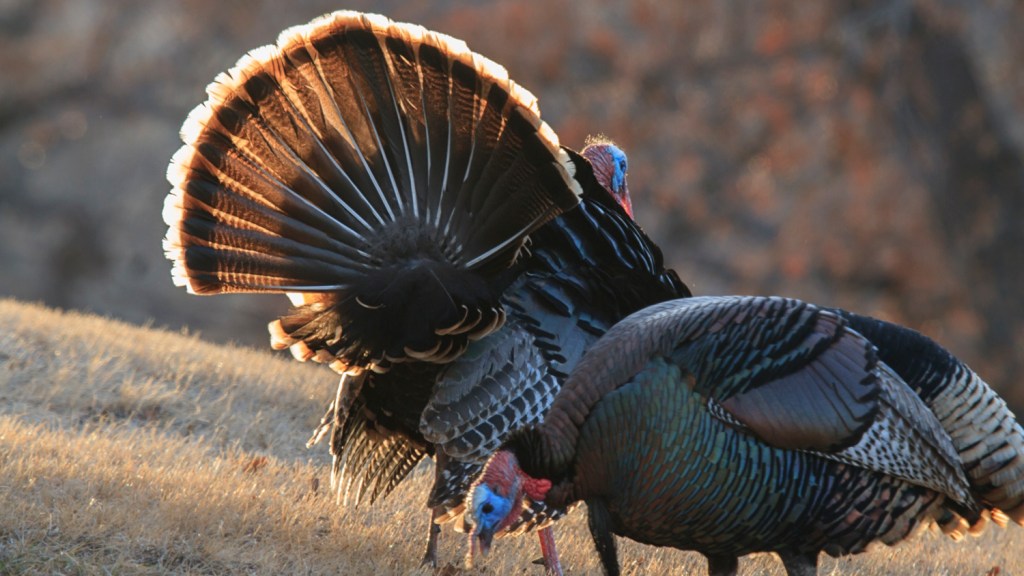



I worked in a northeastern suburb of Chicago. There was a turkey sanctuary next door. One morning we had trouble getting into the door because there were a bunch of turkeys in the way.
(My boss said they were told that we had a job opening.)
years later when I went back up to Chicago to work the Y2K computer changes and traveled to a northwestern suburb I had to stop for turkeys in the road. There were even coyotes next door when I lived right down the street from a mall that had been the largest in the U.S.
In Key West my next door neighbor was an iguana on the ‘hot tin roof’. Now I am in South Carolina and cannot feel comfortable walking in any forest around here.
I love wild turkeys. They have been roaming in my neighborhood for the past twenty years at least. Five years ago they would often show up in numbers upward of thirty in my back yard. In 2010, the day before Thanksgiving, I counted 46 turkeys in my backyard. I laughed at the thought of a “final turkey get together” before the day that they all dread. Lately, I have not seen them in such large numbers. Often it’s just one to three turkeys that come by. The new neighbors put up a “deer fence” three years ago which blocked the pathway they used to follow throughout the neighborhood. Perhaps this is the reason why their numbers have diminished. I have many pictures and videos of these birds that I took over the years. I love to watch them perform their rituals and interactions with one another, especially a strange turkey dance where one or two would follow another and force it to go in a circle; this I found to be strange and fascinating. Now, I miss them and can only hope that they will return in large numbers in the future.
Shelter Island New York has had a resurgence of turkeys …. we see flocks as large as 18 browsing along the roads and in our yards. Welcome !!!
I’ve seen “My Life as a Turkey” twice and could happily see it again. It’s one of the best films I’ve ever seen on any nature subject! Very charming, entertaining and educational! It runs a little less than an hour and can probably be found thru PBS. Happy Holidays!